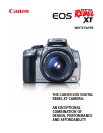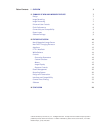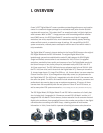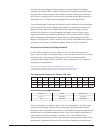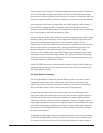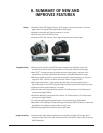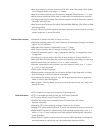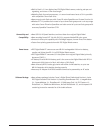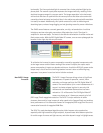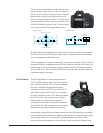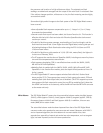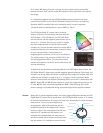
I. OVERVIEW 6
the c
ompact, all-in-one 8 megapixel cameras. These tiny pixels necessarily receive less
light
during exposure. Their meager output signal needs to be amplified heavily in order
t
o get useful information for image processing. That amplification gets applied not just
t
o the image file, but also to any other non-image signal on the sensor, such as heat.
The digit
al noise that results, particularly at high ISO speed settings, is unmistakable.
Compact digital cameras are also typically equipped with noninterchangeable lenses,
surely a limitation. Their pre-set controls are mostly menu-driven and not suited to
in-the-moment operation; most if not all are also slow to start up and slow to take a
picture when the shutter button is pressed. Predictive autofocus with fast-moving
subjects is invariably out of the question. For a similar cost, the EOS Digital Rebel XT
camera offers compatibility with the entire range of Canon EF and EF-S lenses, Canon
EX-series Speedlites and most EOS system accessories, plus speed, responsiveness and
a complete set of controls to make the camera function superbly in any shooting
situation. And if in the past size and weight were problems with digital single lens reflex
cameras, the XT is a must-see.
How does the EOS Digital Rebel XT camera compare with its DSLR brethren? Its
advantages are overwhelming. The XT has the highest image quality in its class. It is the
smallest and lightest EOS Digital SLR ever made, as of February, 2005. In fact, the least
expensive camera that equals its performance is its brother, the Canon EOS 20D,
costing approximately $600 more. Nothing else comes close. The XT has a complete
range of functions and controls. It is remarkably fast and easy to use and its
ultracompact body is a delight. The EOS Digital Rebel XT is the DSLR for everyone.
Image sensor size comparison: 8.0 megapixel DigitalRebel XT (Red) vs.
8.0 megapixel compact digital camera (Black)



